I’d seen an article in a magazine about the Mottisfont Rose Garden and how beautiful it was in mid-summer so one sunny day we decided to visit. The garden is in Hampshire and on our way we stopped in Andover for an early lunch and a little look around the market town.
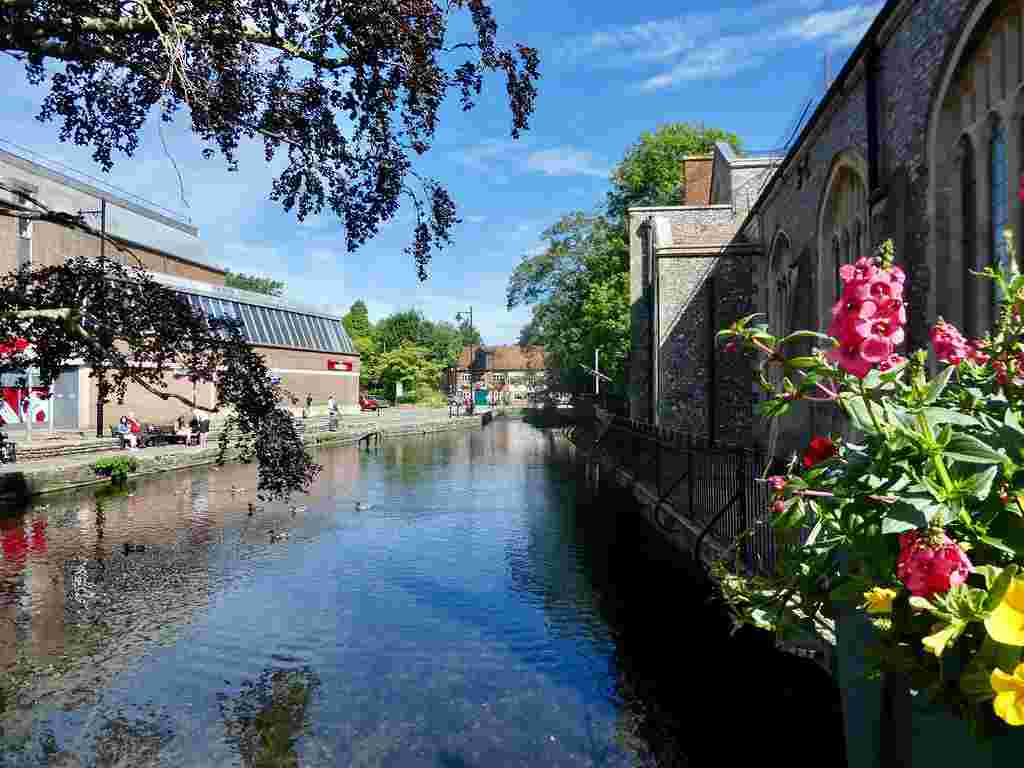
Andover is located in the Test Valley, 18 miles west of Basingstoke and 65 miles south west of London. We found a space in a car park on the edge of town and then followed a riverside path along the River Anton into the attractive town centre. Andover dates back to the 18th century and was an important stopping place for stagecoaches travelling between London, Salisbury and Exeter.
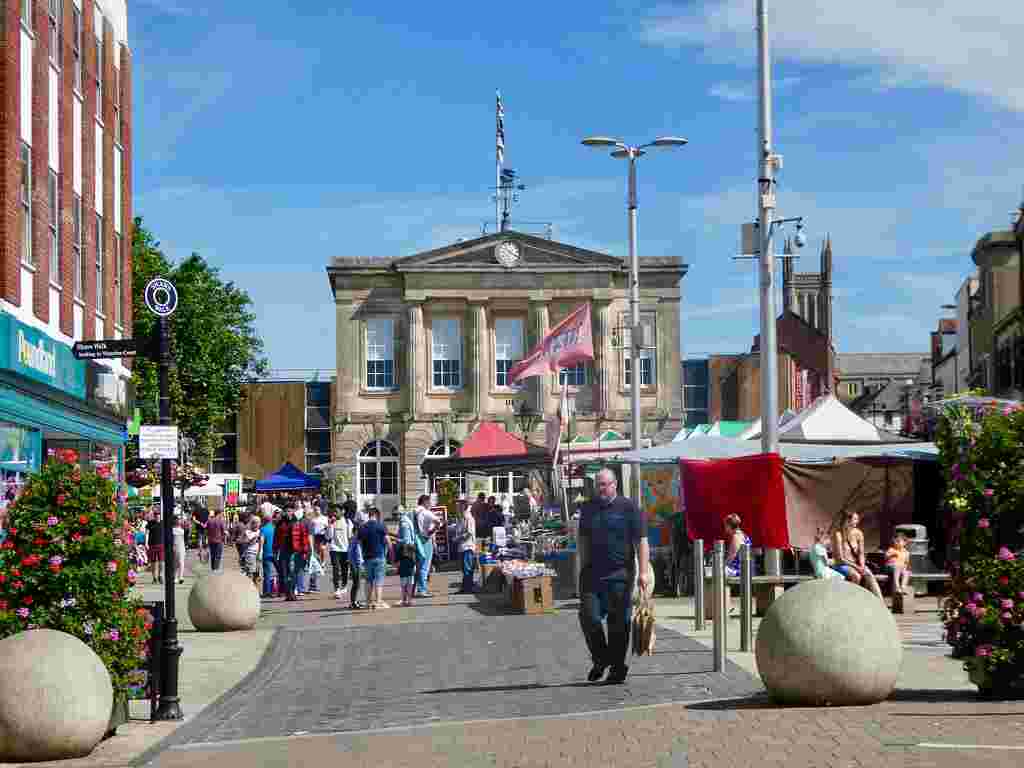
A market was taking place along the high street and this is held each Thursday and Saturday. We found a pleasant pub for an early lunch called the John Russell Fox which was the former home of the local newspaper, the Andover Advertiser and contained some printing press memorabilia.
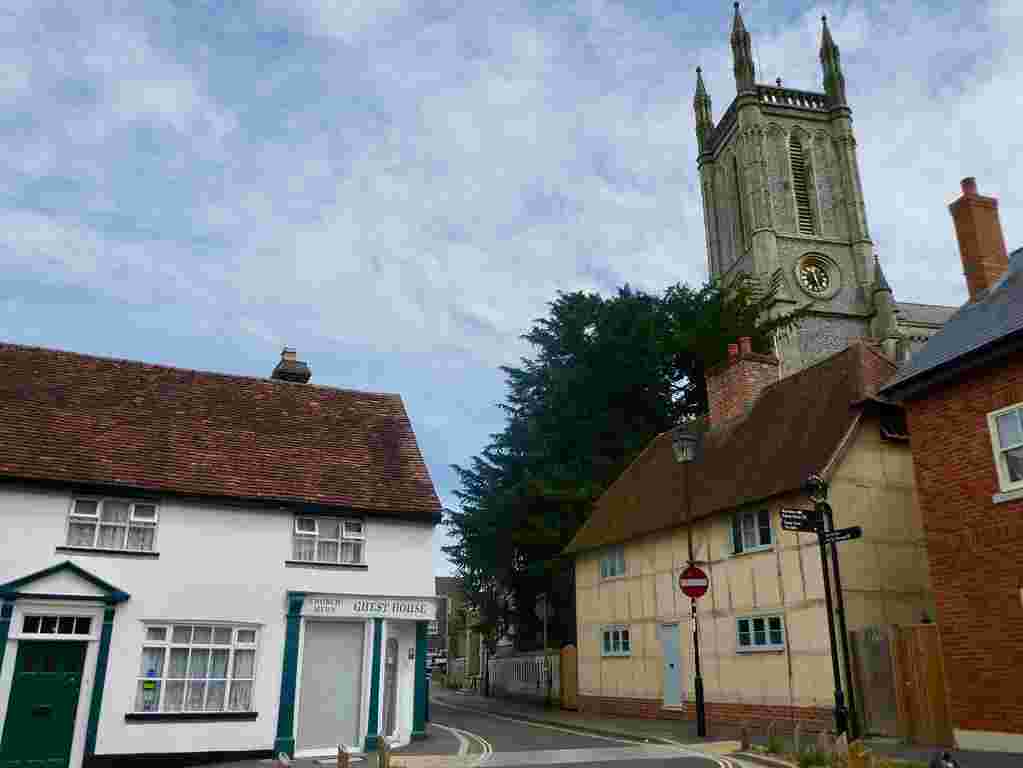
Afterwards we strolled along the narrow lanes leading from the high street where we found some interesting old buildings. We would like to return to Andover when we have time to explore in more detail and to also visit the Museum of Army Flying which is located nearby.
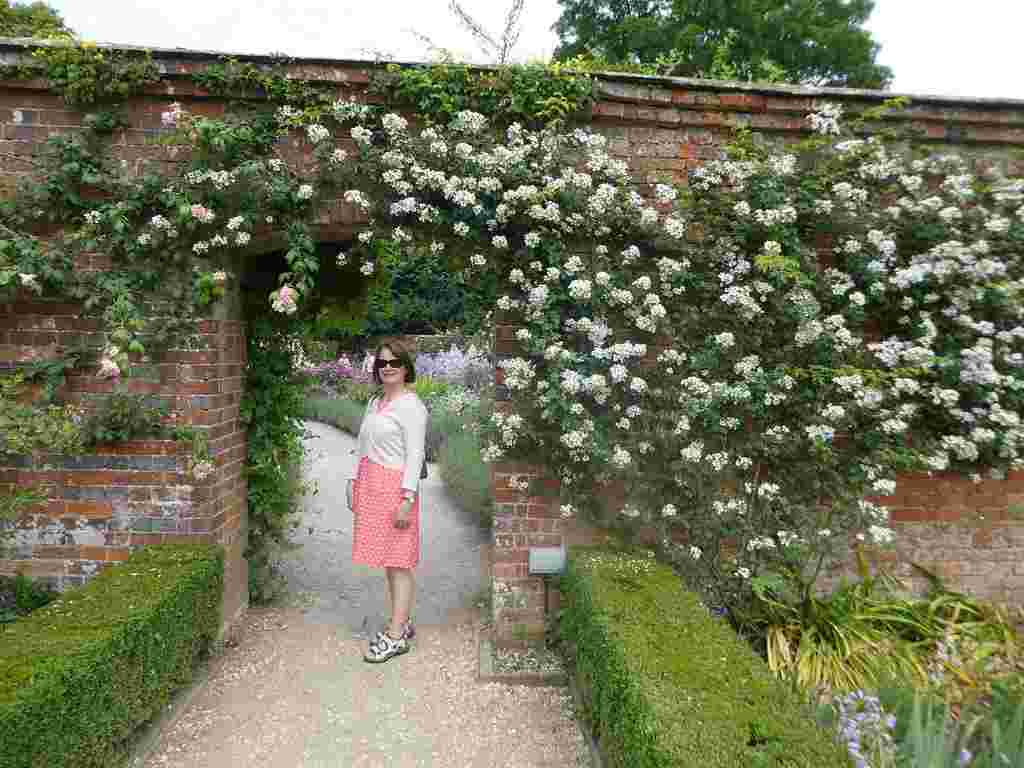
It was then back to the car for the short journey to Mottisfont which is located midway between Andover and Romsey. As we had arrived on a Saturday afternoon when the rose garden was at its best, it was very busy. Parking was well organised and we were directed to overflow parking in nearby fields not far from the walled gardens. The house and gardens are owned by the National Trust and as we are members and pay an annual subscription we could visit free of charge but usual adult admission is £14.30. I recommend membership as if you only visit a few properties a year it soon covers the cost of subscription.
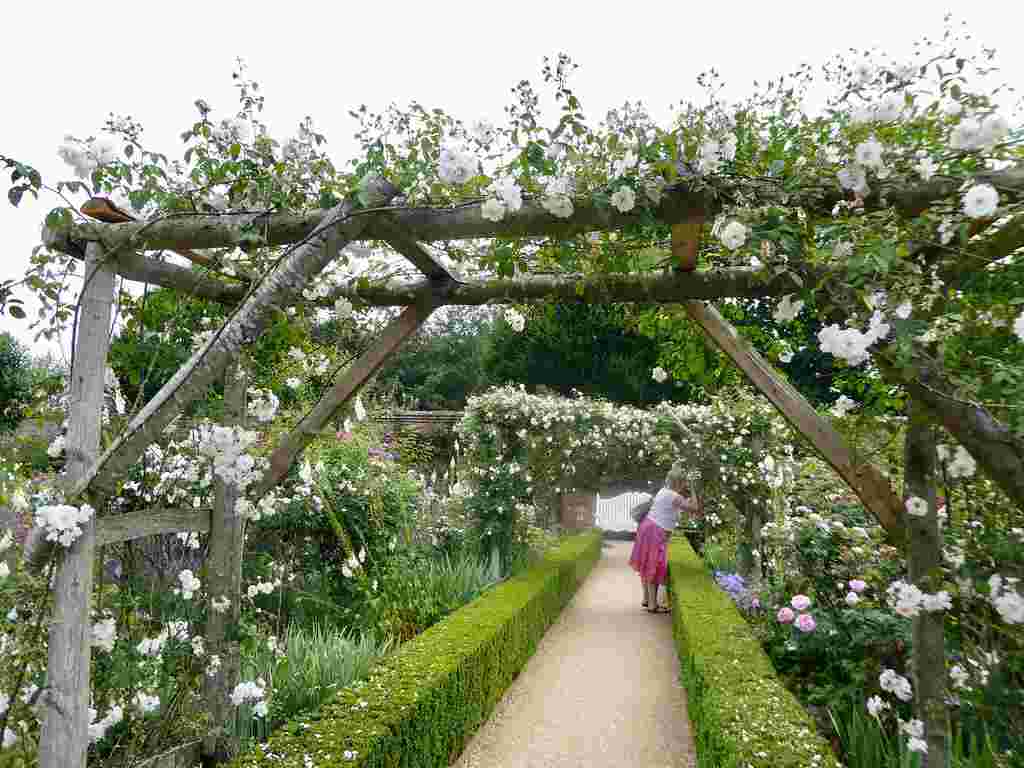
Mottisfont is home to one of the most famous rose gardens in the world, featuring the national collection of old fashioned roses. Entering the arched gateway through a rose covered wall into the first garden we were greeted with the heady fragrance of thousands of blossoming roses. There are over 500 varieties, most of them just flowering once a year making their full summer blooming an incredible sight. We admired pale pink roses and delicate Chinese tea roses in shades of cream, pink and red. Some of the varieties are so rare that Mottisfont has the only stock in existence.

The garden was created by Graham Stuart-Thomas in the 1970’s to house varieties that may otherwise have become extinct. To create a season long display the garden also contains a mix of perennials including towering foxgloves and canterbury bells. Deep box lined borders with rambling and climbing roses cover the old stone walls with the main paths through the garden meeting at an ornamental fountain central point.

Leaving the rose garden we then wandered along to the house which was originally designed as a medieval Augustine priory in 1291 having since been transformed by its many varied owners. The house still retains its original font from which it got its name. It’s last owner, Maud Russell was an arts patron and society hostess. When the Russell’s first purchased Mottisfont the house was in a state of disrepair but over time they modernised both the house and garden and it became a venue for extravagant house parties. Invited to these gatherings were their large circle of literary and artistic friends.
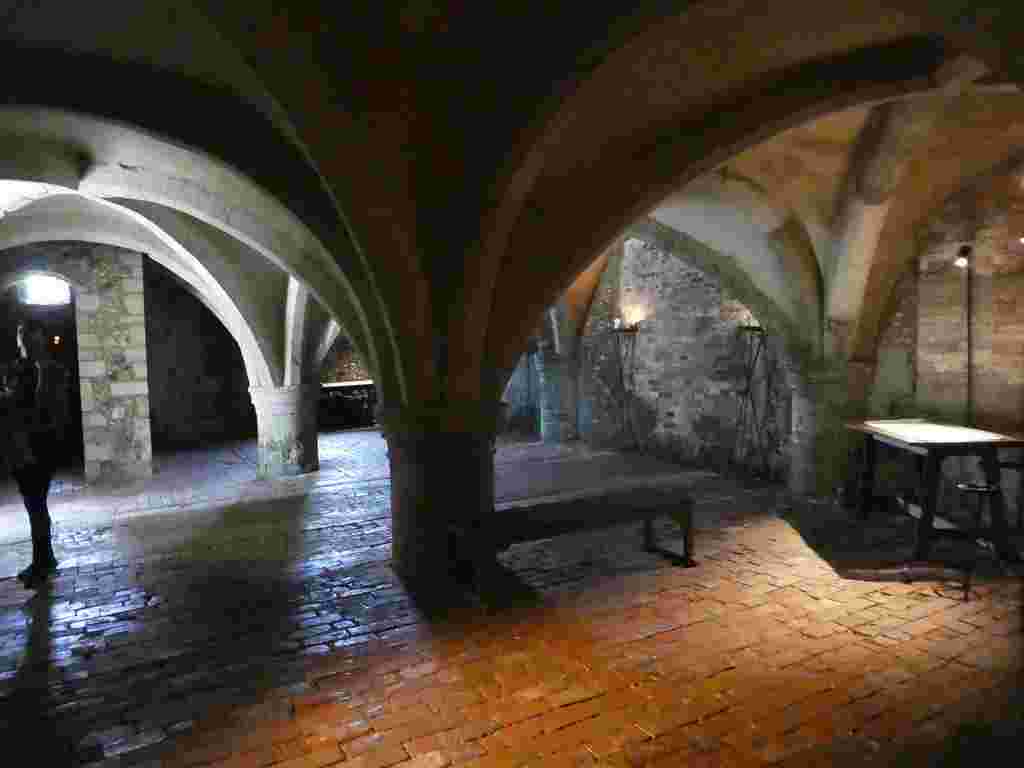
We started our self guided tour of the house in the vaulted cellarium which was a giant larder for the 13th century priory. The lavishly appointed ground floor rooms set the scene for entertaining guests whilst upstairs four poster beds with exquisite drapes confirmed the opulent lifestyle of the Russell’s. In each of the rooms a National Trust volunteer was on hand to answer questions and useful information boards detailed its history and furnishings.
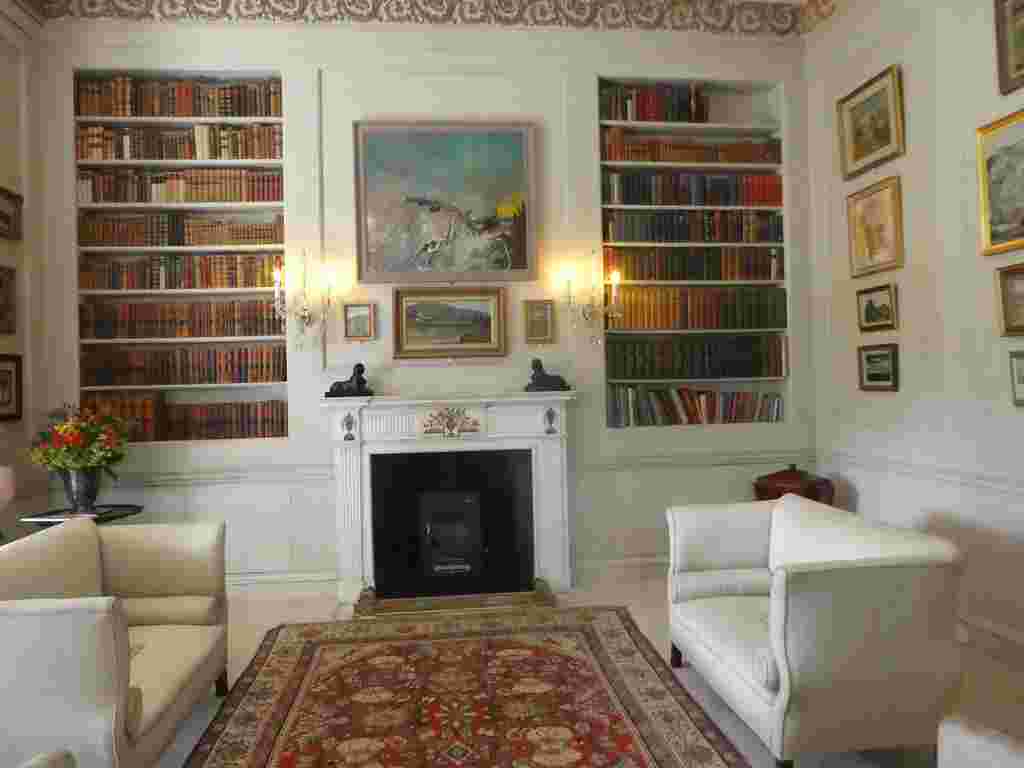
Several of the rooms were closed due to ongoing refurbishments but there was still plenty to see. The upper floor gallery is now used for temporary exhibitions and at the time of our visit a Radio Four, Woman’s Hour craft finalist exhibition was taking place which included items as diverse as fine porcelain to a beautiful hand made bicycle.
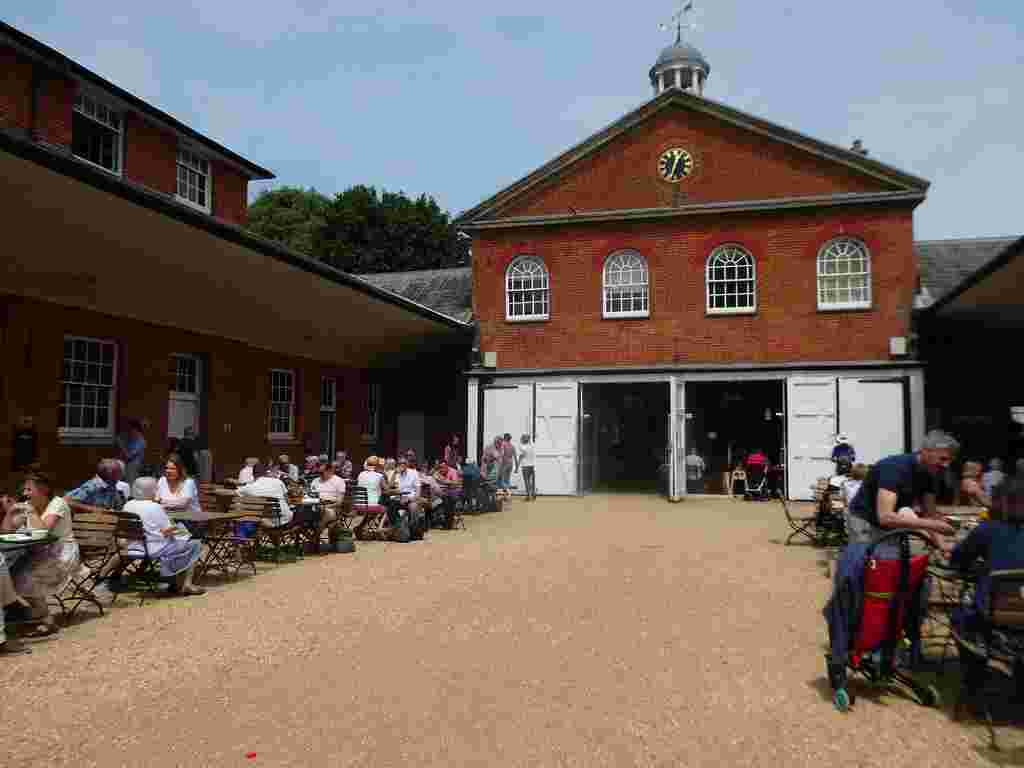
Returning outdoors, we wandered through the grounds passing the stables which have been transformed into a large cafe with outdoor seating. As the weather was so beautiful many visitors were relaxing on the sweeping lawns and enjoying picnics. We even saw these people who were dressed in period costume enjoying lunch on the terrace.
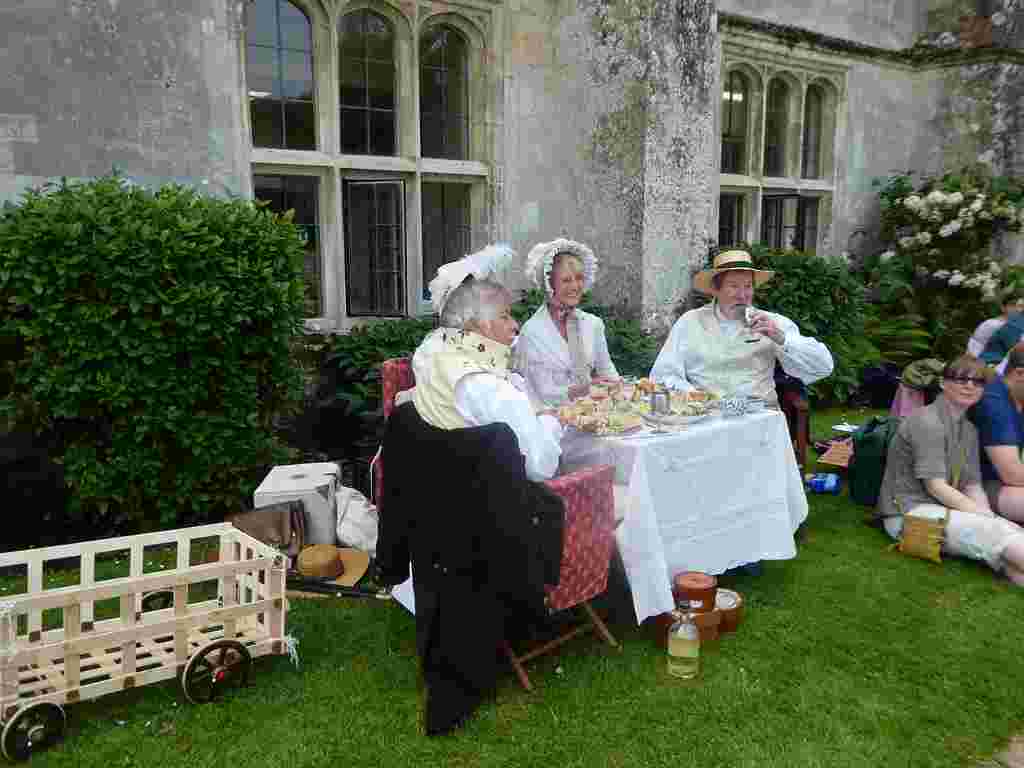
Continuing on our way, we strolled along the winding paths and headed out into the neighbouring countryside to follow one of the Mottisfont estate’s trails. Although it was a hot, sultry afternoon we managed to keep cool wandering along the shaded paths alongside the Font stream and slightly further, along the banks of the River Test.
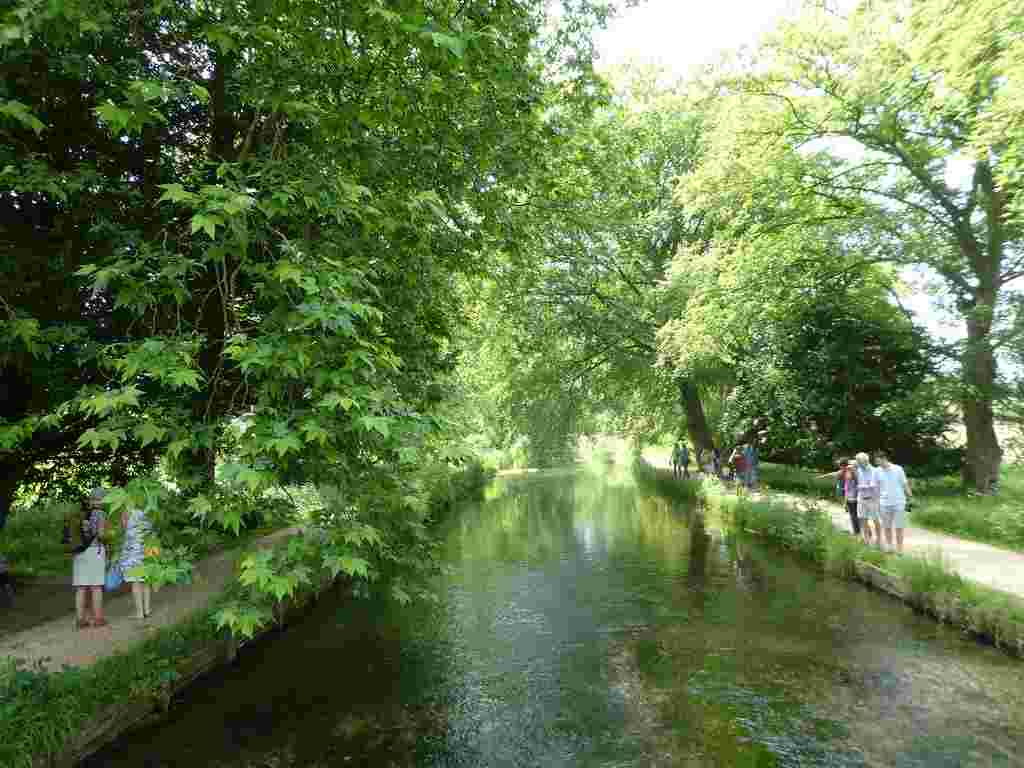
It felt very tranquil by the riverside where we spotted dozens of marbled white butterflies fluttering in the long grass and trout swimming in the crystal clear water of the River Test. The river meanders along the edge of the estate with several footbridges enabling walkers to cross at various points and return to the house along the opposite bank.
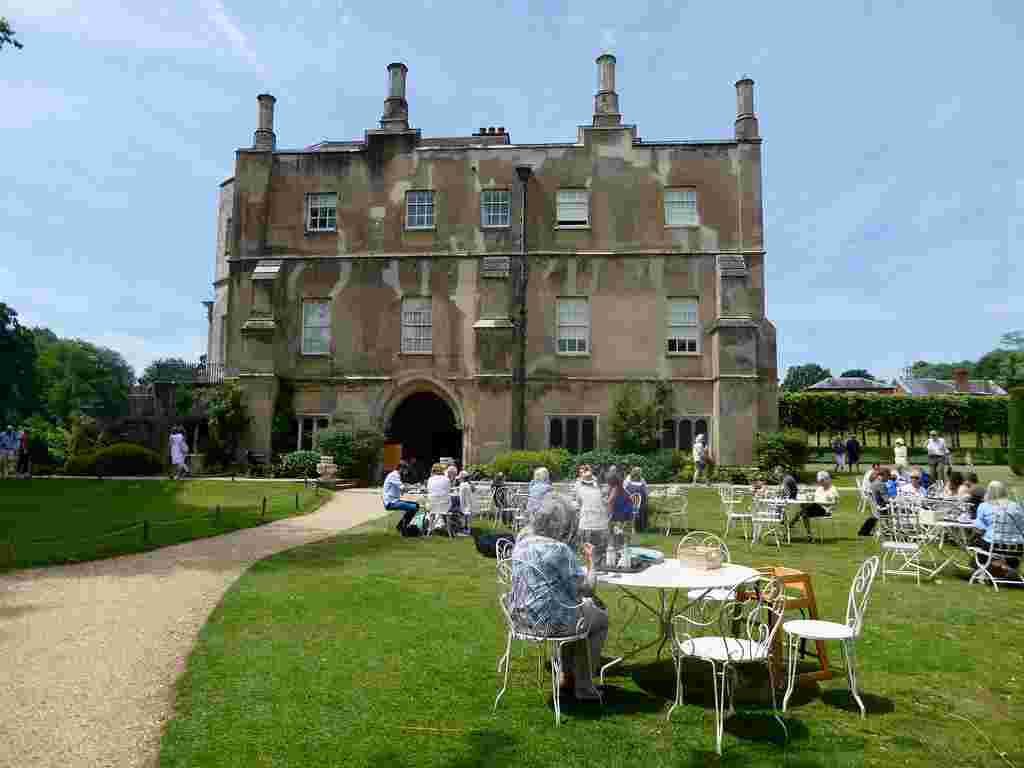
The gardens were still busy as we passed through on our way back to the car. We were so pleased that we had managed to fit in a visit when the roses were at their peak but although this is obviously the highlight, there are still plenty of things to see and do at Mottisfont at other times of the year and I would recommend a visit.
If you have enjoyed reading this post, you may also be interested in the following:
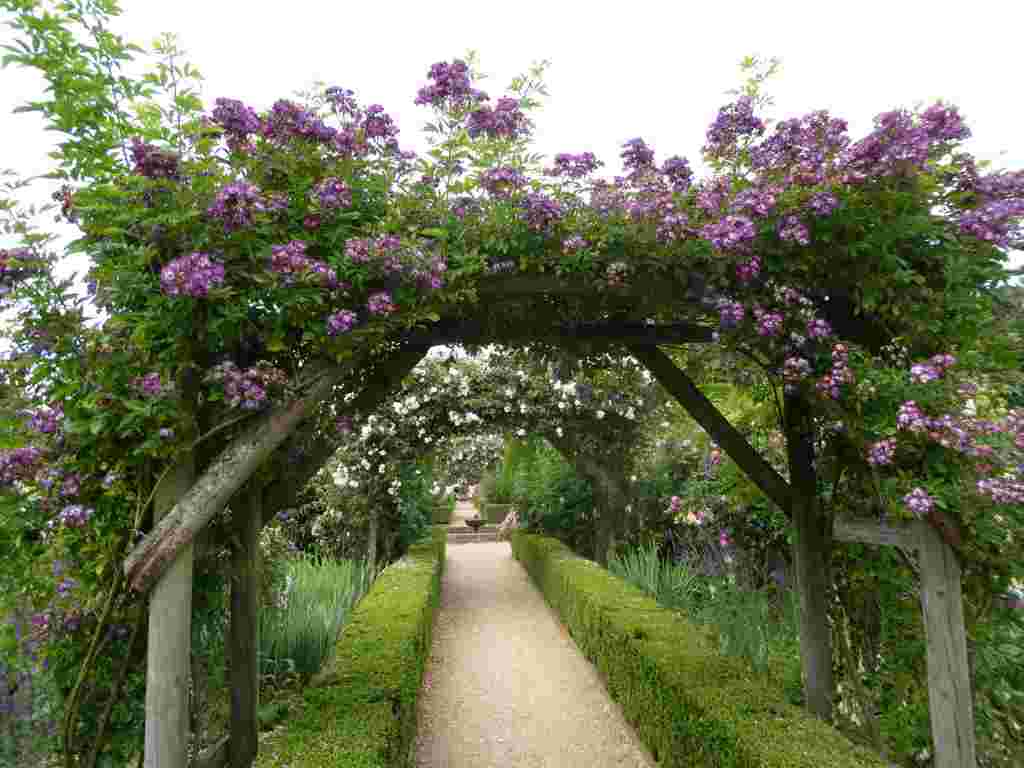

Leave a comment